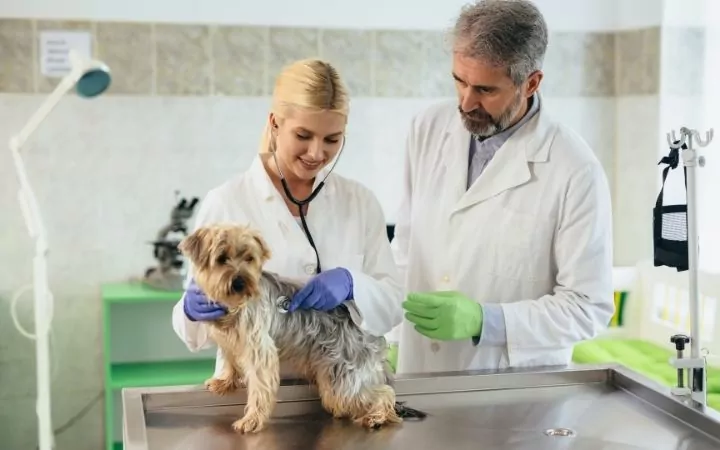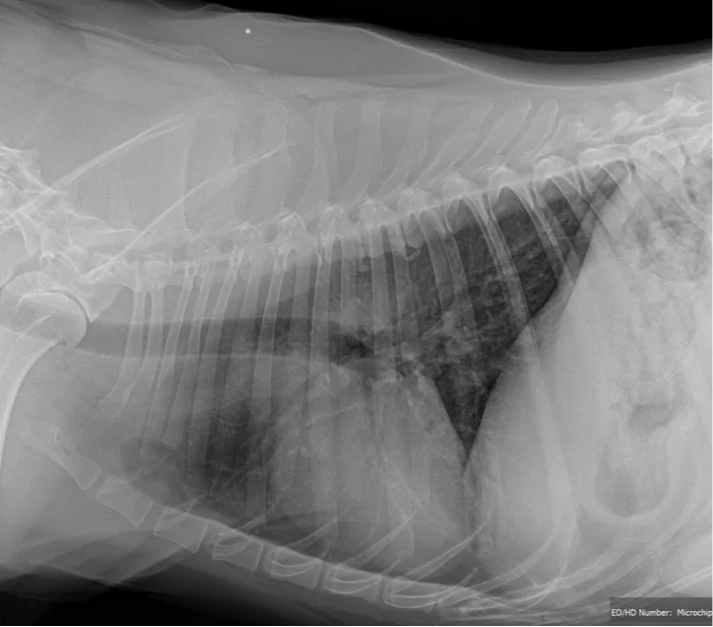Intro Into Blastomycosis in Dogs
Blastomycosis is a fungal infection in dogs that can be life-threatening in some cases. It can also affect humans and other animals. Blastomycosis in dogs is the disease caused by being infected by a fungus called Blastomyces dermatitidis.
What is Blastomyces? It is a dimorphic fungus; when it infects dogs, it morphs into a yeast infection at the dog’s warm body temperature and spreads throughout the body, affecting different organs.
Blastomyces is most commonly found in sandy, acidic soil near fresh water such as lakes and streams. It can also be found in decaying plant material and animal waste, common in wooded areas, forests, and farmland. The fungus requires a specific environment to develop and is located in specific pockets rather than being widespread.

The fungus Blastomyces is native to North America and has a wide distribution, such as the USA states Mississippi, Missouri, and Canadian regions such as Saskatchewan, Quebec, and Ontario.
How is the Virus Contracted by Canines?
Dogs are most commonly infected by inhaling the fungal spores from contaminated soil when digging or following a scent. Once in the lungs, Blastomyces transforms into yeast, infecting the lungs and spreading throughout the body.
The spores can also enter through the skin. The organism can then travel through the blood or lymphatic system to other bodily tissues such as lymph nodes, eyes, skin, brain, and bone; it can also cause lung lesions. Most infections are obvious to owners due to the lesions caused, and Blastomycosis requires medical care to treat it; it is rare to resolve on its own.
Explaining the Diagnosis to a Pet Owner
Suppose your dog is infected with Blastomyces dermatitidis. In that case, this means your pet has a severe systemic fungal infection that needs to be treated with antifungal medication and possibly will need to be hospitalized at your vet clinic.
There is treatment available, but it can take many months before your dog can stop the medicine, and there may be permanent damage to affected organs. The good news is that as long as your dog hasn’t got severe lung or neurological (brain) signs, they will likely recover with treatment.
Are Humans at Risk for Contracting Canine Blastomycosis?
Humans can become infected by coming into contact with the fungus in the outside world, just like dogs. If you think your dog has become infected near your home, contact your family physician for advice on avoiding infection yourself.

Contracting the disease from your infected dog is unlikely, but you must be careful as there are a few ways you could get the disease.
Skin wounds can be infectious, particularly if they are bandaged. Removing the bandage could expose you to the disease as it becomes air-borne (aerosolized). Thus, any wounds must be carefully managed, and if applications must be placed, any bandage changes should be done by trained professionals wearing appropriate protective clothing. If your dog develops skin lesions, contact your veterinarian for advice.
Getting bitten by your infected dog could cause an infection. Any aggressive dogs should be managed carefully. If you are concerned about your dog possibly biting you, discuss this with your veterinarian and a human medical healthcare professional to get more advice.
If you or anyone in your household is showing symptoms of blastomycosis, contact your doctor.
Known Signs and Symptoms
After a dog is exposed, it can take weeks or months for signs to develop. General symptoms of infection in your dog include fever, loss of appetite, weight loss, and lethargy. Blastomycosis can be fatal if left untreated.
Specific signs can develop depending on what organ the infection attacks:
Lungs: Are most commonly affected; 65% to 85% of dogs show lung problems; you may see difficulty breathing, coughing, wheezing, exercise intolerance, and respiratory distress (this is an emergency). Although lungs are commonly affected, you may not always see that your pet is affected; radiographs (x-rays) may show lesions in infected dogs.
Eyes: You may see discharge, redness, cloudiness, blindness, pain. Any eye lesions must be dealt with quickly to prevent permanent damage.
Skin: Lesions are seen on the nose, face, and nail beds, frequently filled with pus, limping.
Lymph nodes: Either one or more can become enlarged.
The bone: You may see swelling on the lower parts of your dog’s leg.
Brain: Lesions are luckily rare, with only 3% to 6% of dogs developing them. You may see that your dog becomes flat (depressed), lethargic, and badly affected dogs may even experience seizures.
An infected dog with neurological signs is serious and should be seen as an emergency by your veterinarian.


Predisposed Species That are Susceptible
Many animals can become infected, but dogs are most susceptible. Dogs are 10x more likely to become infected than people and 100x more likely than cats.
All types of dogs can become infected. Dog’s that are mostly affected are commonly in the environments where the fungus Blastomyces dermatitidis grows. Young (2-4-year-old), large-breed male sporting and hunting dogs are the most at risk due to their lifestyle and frequent exposure to soil and water.
Intact male dogs are more commonly affected than neutered dogs due to their tendency to roam. Studies have shown that most affected dogs live near a body of water. Most cases are diagnosed in late summer or early fall.
The Treatment of Blastomycosis
Once your veterinarian has made a diagnosis of Blastomycosis, your pet will likely begin treatment with antifungal medication. In mild cases, this can be done at home using oral antifungals; usually, a drug called Itraconazole.
The treatment can take a long time, usually at least 60 days, or one month after all signs of infection have resolved.
In more severe cases where the dog has difficulty breathing, hospitalization, and oxygen supplementation may be needed until the lung’s condition has improved.
If the infection has been present for a long time without medication or medication hasn’t cured the pet, surgery may be required to remove part of the lungs.
In treated dogs, approximately 70% will be cured, and about 20% will relapse for months to a year after treatment.
The Optimal Prevention Plan
A small dog living in the city and going for walks on footpaths and well-maintained parks is unlikely to contract Blastomycosis. Allowing your dog off-leash in areas where the fungus can grow increases risk.
Sticking to footpaths and keeping your dog on a leash will help reduce the risk, and neutering your dog to prevent roaming behavior.
Unfortunately, the fungus can not be destroyed or removed as it lives everywhere (ubiquitous).

Summary
Blastomycosis is a fungal infection commonly inhaled by dogs in wet, rotting natural material areas. The condition can spread from your pet’s lungs throughout its body, showing clinical signs sometimes not until months after the infection.
The disease can be treated with antifungal medication, and in mild cases, the prognosis is good. Where dogs are more seriously affected, intensive treatment is required to allow for a good outcome.
Humans and other animals can become infected, and it’s essential to practice good hygiene if you are treating your infected dog.
